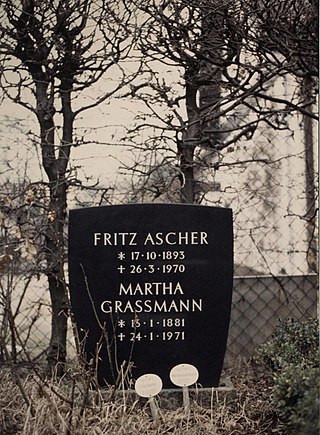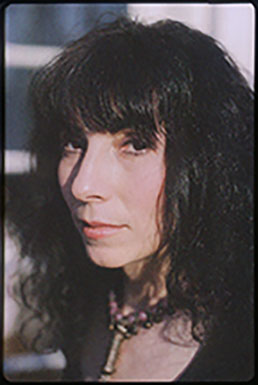Susan Schwalb | |
|---|---|
 Strata #502 by Susan Schwalb | |
| Born | 1944 New York City, New York |
| Nationality | American |
| Education | Carnegie Mellon University |
| Known for | contemporary painter |
Susan Schwalb is a contemporary silverpoint artist.
Susan Schwalb | |
|---|---|
 Strata #502 by Susan Schwalb | |
| Born | 1944 New York City, New York |
| Nationality | American |
| Education | Carnegie Mellon University |
| Known for | contemporary painter |
Susan Schwalb is a contemporary silverpoint artist.
Schwalb was born in New York City (in 1944). She attended the Carnegie Mellon University. [1] In 1983 she married composer Martin Boykan [2] and works from her Manhattan studio. [3] [4]
Her work is represented in the National Gallery of Art, Washington D.C., [5] The Metropolitan Museum of Art [6] the British Museum, London, [7] the Brooklyn Museum, New York, [8] the Fogg Museum, Harvard University, Cambridge, Massachusetts, [9] the Museum of Fine Arts, Houston, Texas, [10] the Library of Congress, Washington, DC, [11] the Rose Art Museum, Brandeis University, Waltham, Massachusetts, [12] and the Yale University Art Gallery, New Haven, Connecticut.[ citation needed ]

Silverpoint is a traditional drawing technique first used by medieval scribes on manuscripts.
Philip Martin Pearlstein was an American painter best known for Modernist Realist nudes. Cited by critics as the preeminent figure painter of the 1960s to 2000s, he led a revival in realist art.

Hannah Wilke was an American painter, sculptor, photographer, video artist and performance artist. Wilke's work is known for exploring issues of feminism, sexuality and femininity.

Felix Samoilovich Lembersky [1] was a Russian/Soviet painter, artist, teacher, theatre stage designer, and organizer of artistic groups.[1] He is known for his 'Execution. Babi Yar' series (1944–52), which are considered to be among the earliest artistic representations of the Nazi massacres of Jews in Kyiv.

The feminist art movement in the United States began in the early 1970s and sought to promote the study, creation, understanding and promotion of women's art. First-generation feminist artists include Judy Chicago, Miriam Schapiro, Suzanne Lacy, Judith Bernstein, Sheila de Bretteville, Mary Beth Edelson, Carolee Schneeman, Rachel Rosenthal, and many other women. They were part of the Feminist art movement in the United States in the early 1970s to develop feminist writing and art. The movement spread quickly through museum protests in both New York and Los Angeles, via an early network called W.E.B. that disseminated news of feminist art activities from 1971 to 1973 in a nationally circulated newsletter, and at conferences such as the West Coast Women's Artists Conference held at California Institute of the Arts and the Conference of Women in the Visual Arts, at the Corcoran School of Art in Washington, D.C..
Judith Margolis is an Israel-based American artist working visually in paintings, drawings, artist's books and multi-media collages. In her art and writing she "explores tensions between consciousness, feminism, and religious ritual tradition".

Fritz Ascher was a German artist, whose work is characterized by Expressionist and Symbolist sensitivity. In paintings, works on paper and poetry he explored existential questions and themes of contemporary social and cultural relevance, of spirituality and mythology. Ascher's expressive strokes and intense colors create emotionally intense and authentic work.

Howardena Pindell is an American artist, curator and educator. She is known as a painter and mixed media artist, her work explores texture, color, structures, and the process of making art; it is often political, addressing the intersecting issues of racism, feminism, violence, slavery, and exploitation. She is known for the wide variety of techniques and materials used in her artwork; she has created abstract paintings, collages, "video drawings," and "process art."
The Women's Caucus for Art (WCA), founded in 1972, is a non-profit organization based in New York City, which supports women artists, art historians, students, educators, and museum professionals. The WCA holds exhibitions and conferences to promote women artists and their works and recognizes the talents of artists through their annual Lifetime Achievement Award. Since 1975 it has been a United Nations-affiliated non-governmental organization (NGO), which has broadened its influence beyond the United States. Within the WCA are several special interest causes including the Women of Color caucus, Eco-Art Caucus, Jewish Women Artist Network, International Caucus and the Young Women's Caucus. The founding of the WCA is seen as a "great stride" in the feminist art movement.
Siona Benjamin is an Indian-American artist originally from Mumbai, India and now residing in the New York City area.

Mary Miss is an American artist and designer. Her work has crossed boundaries between architecture, landscape architecture, engineering and urban design. Her installations are collaborative in nature: she has worked with scientists, historians, designers, and public administrators. She is primarily interested in how to engage the public in decoding their surrounding environment.
Jane Logemann is an American artist based in New York City, specializing in abstract aesthetic featuring symmetry in nature and calligraphy-hebraic art. She is a member of the American Abstract Artists (AAA) and her art is exhibited in a variety of public galleries including the Museum of Modern Art, the Walker Art Center, and the Contemporary Jewish Museum.

Jeannine Cook, is a contemporary metalpoint artist who works from her studio in Palma de Mallorca, Spain, after living in the United States. Encouraged to concentrate on art rather than languages and freelance journalism by Jeanne Nelson Szabo, a former Professor of Art at University of California Los Angeles, Cook initially exhibited watercolours in Westchester, New York, and elsewhere in New York from 1979 onwards.
Joyce Reopel (1933–2019) was an American painter, draughtswoman and sculptor who worked in pencil, aquatint, silver- and goldpoint, and an array of old master media. A Boris Mirski Gallery veteran, from 1959 to 1966, she was known for her refined skills and virtuosity. She was also one of very few women in the early group of Boston artists that included fellow artist and husband Mel Zabarsky, Hyman Bloom, Barbara Swan, Jack Levine, Marianna Pineda, Harold Tovish and others who helped overcome Boston's conservative distaste for the avant-garde, occasionally female, and often Jewish artists later classified as Boston expressionists. Unique to New England, Boston Expressionism has had lasting local and national influence, and is now in its third generation.

Bernis von zur Muehlen is an American fine arts photographer. After receiving a BA in literature, second in class, from the University of Pennsylvania in 1963, earning a Phi Beta Kappa in 1962, she taught English at her alma mater Northeast High School (Philadelphia), where she appeared as the English teacher giving a class on poetry https://www.youtube.com/watch?v=UX2OHIzVe1g in Fredrick Wiseman's celebrated cinéma vérité documentary High School. After moving to Northern Virginia, she began photographing the male nude, turning to other subjects in later years. She has lived in Northern Virginia since 1968. She has been married to economist and photographer Peter von zur Muehlen since 1973.
Elizabeth Whiteley is an American fine artist and designer.
Shona Macdonald is a Scottish artist and academic. She is Professor of Art at the University of Massachusetts Amherst.
Judith Weinshall Liberman is an Israeli artist who is known for the Holocaust Wall Hangings, a series of sixty loose-hanging fabric banners of varying sizes created between 1988 and 2002 depicting the plight of the Jewish people and other minorities during the Holocaust of World War II.
Susan Kaprov is an American multi-disciplinary artist whose work spans the fields of photography, painting, graphic design, and installation art.
David Einstein is an American artist based in Palm Springs, California.